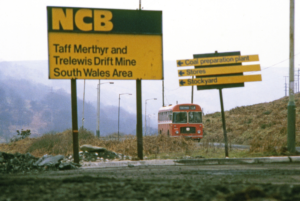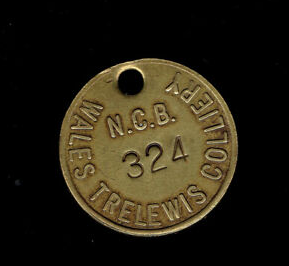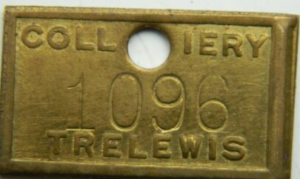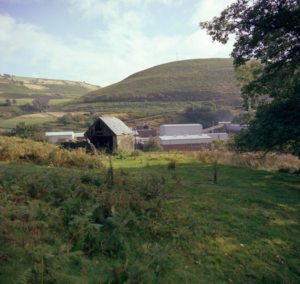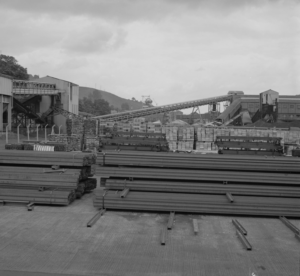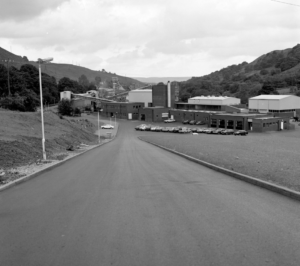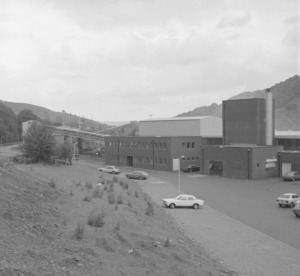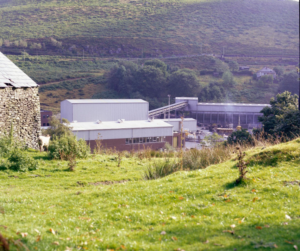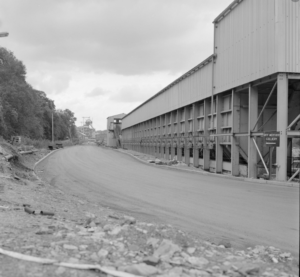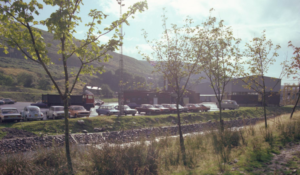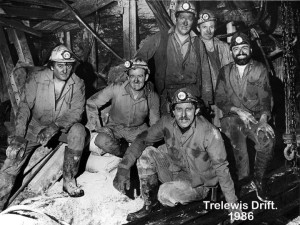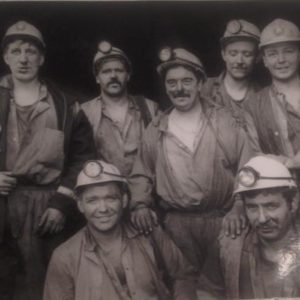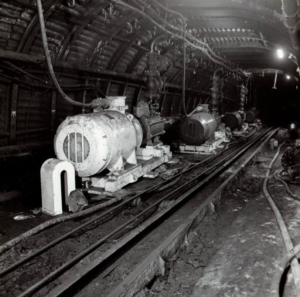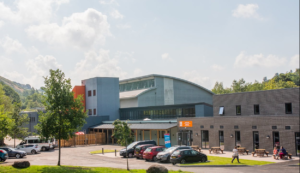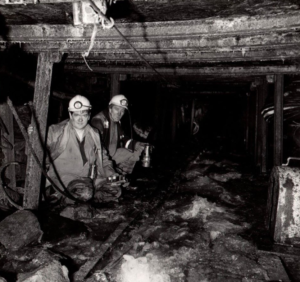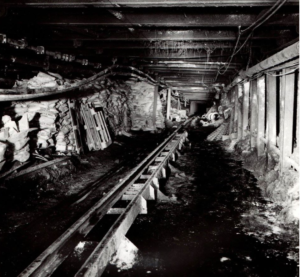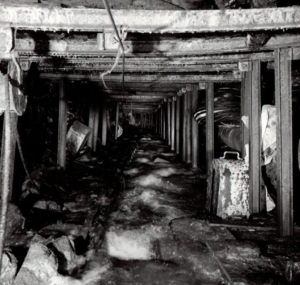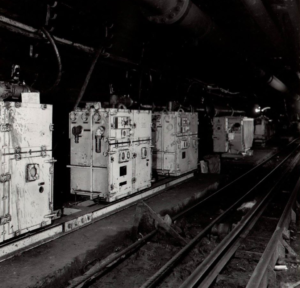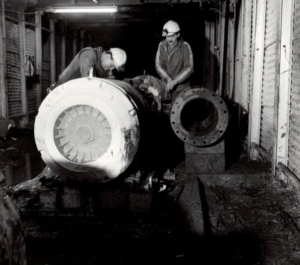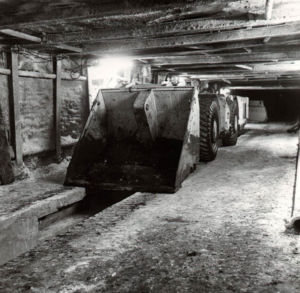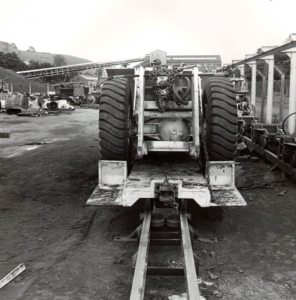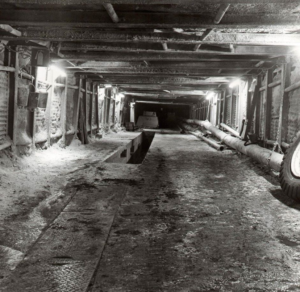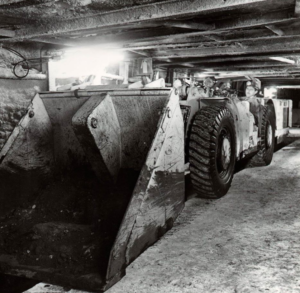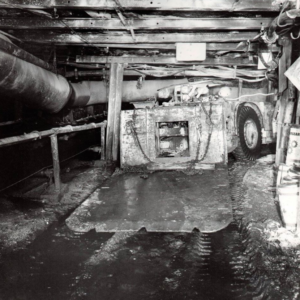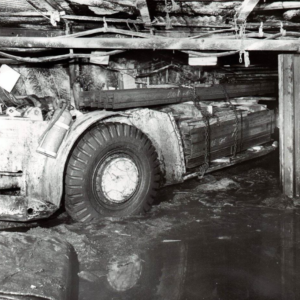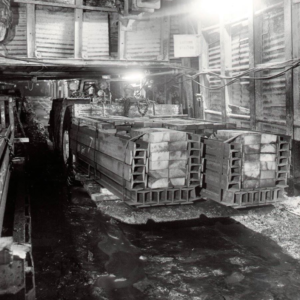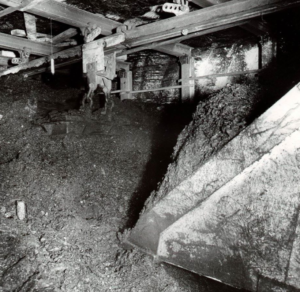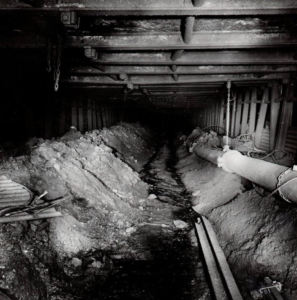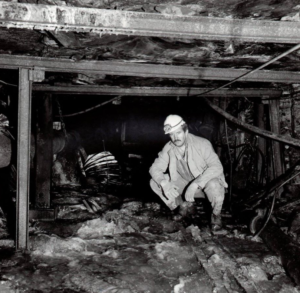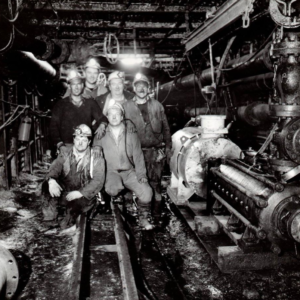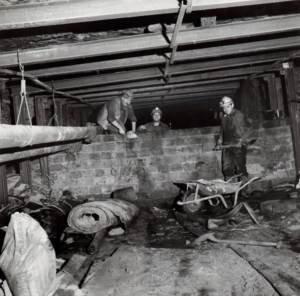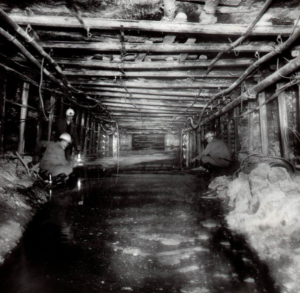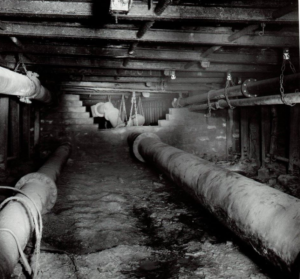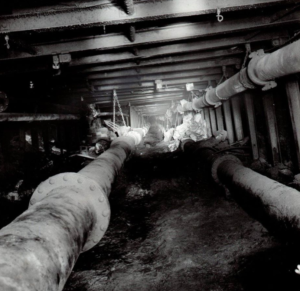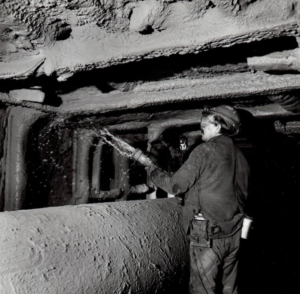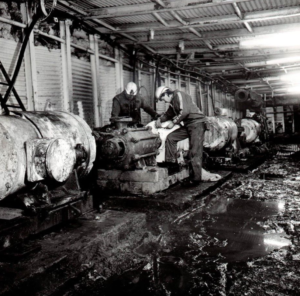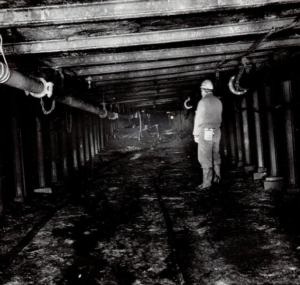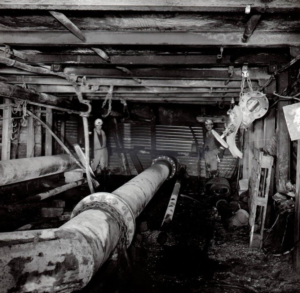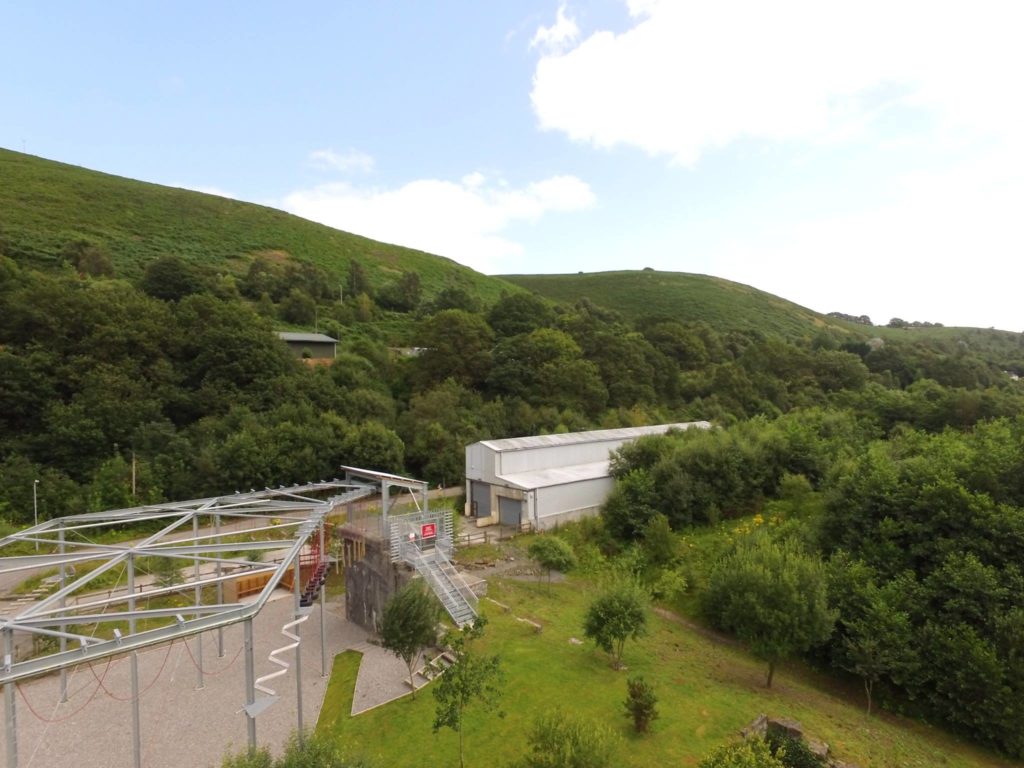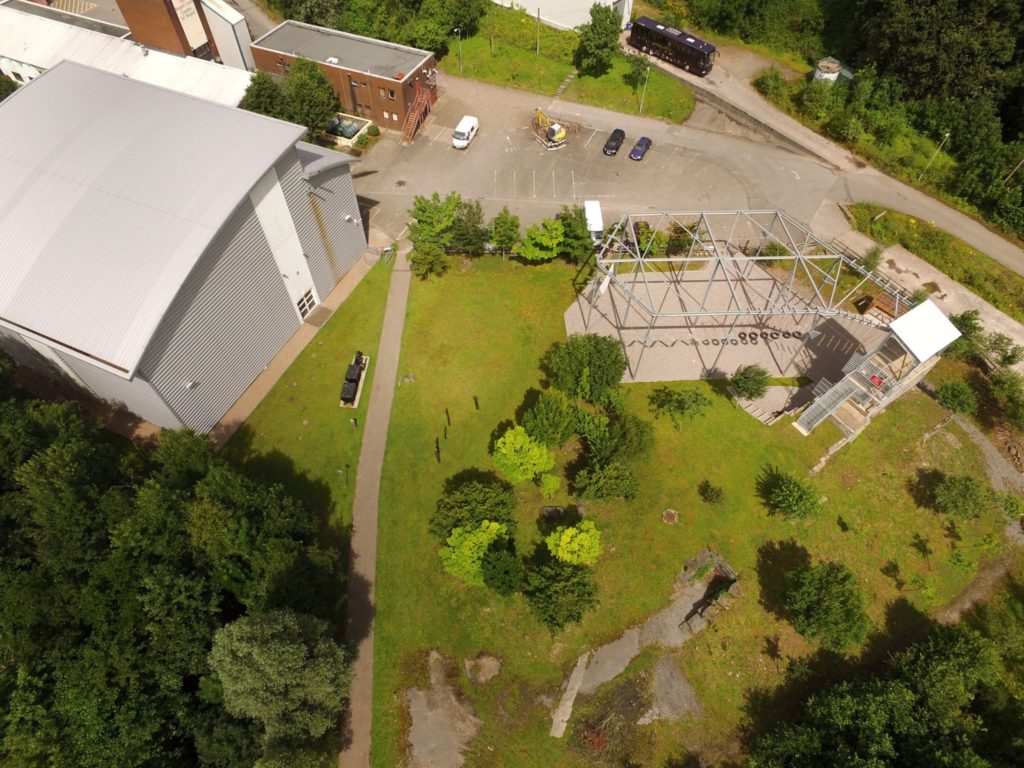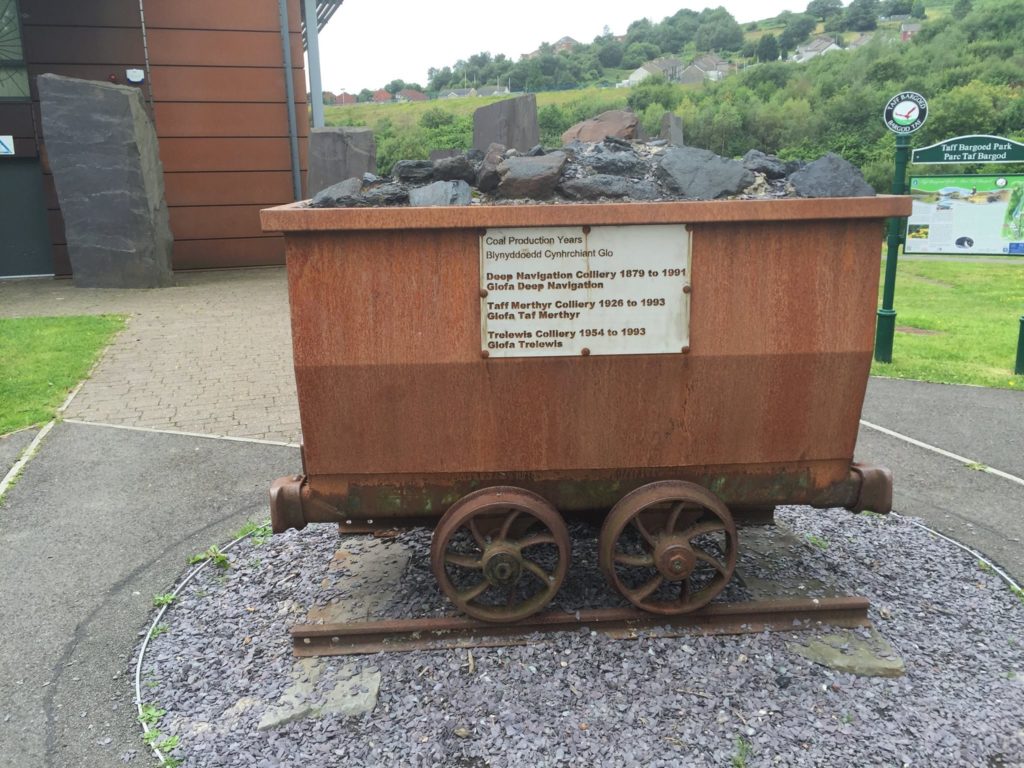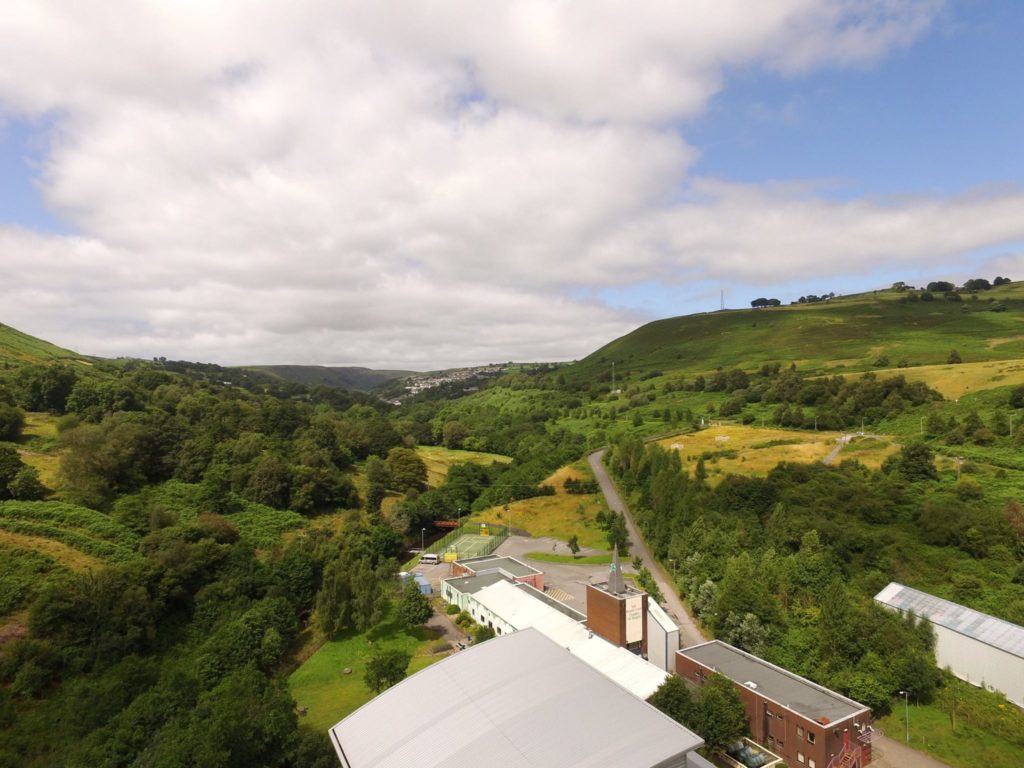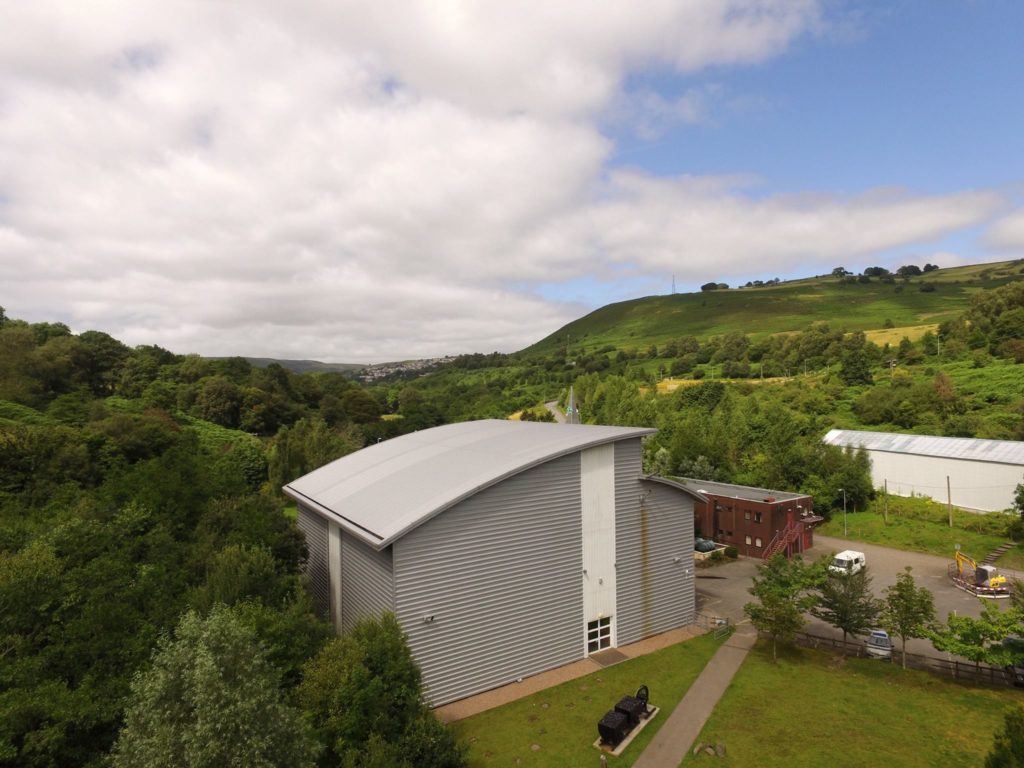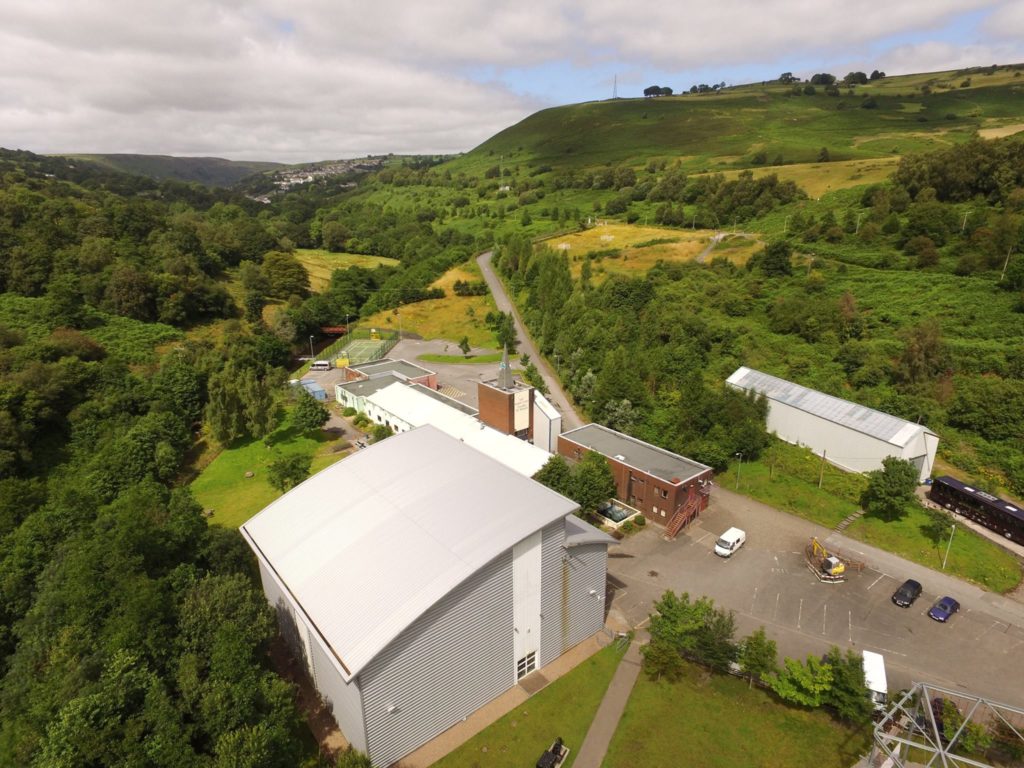Trelewis Drift Mine
Trelewis Drift
During the early 1950’s the National Coal board had high hopes for the new collieries in south Wales and aspired for the major reconstruction projects they had initiated.
Abernant and Cynheidre had failed to produce the coal that was expected and the results in their early years was disappointing, with this in mind the NCB decided to drive a number of drift mines, which involved substantially lower capital investment, into certain areas where it was impossible to guarantee the life expectancy of the mines.
Four Drift mines were driven in Glamorgan, Trelewis in 1954, Bleanant and Coedcae in 1963 and Treforgan in 1969. Far from being the short- term projects that were originally envisaged, the Drift mines proved to be outstanding successes in output and productivity.
The main drift was sunk to around 340 yards with a 1 in 4 gradients, it was fourteen feet in height and the hope at the time was that it could yield nearly 5 million tonnes of coal during its lifetime.
Trelewis Drift was opened to work the Brithdir seams from the surface of nearby Taff Merthyr colliery. It was part of the NCB’s South Western Divisions Number 4 area (Aberdare). A dozen men were employed on the surface and 164 employed underground; the mine manger was Mr V Savage.
By 1961 Trelewis drift was part of the most productive group in South Wales (group 4) Also in this group were Merthyr Vale, Deep Navigation and Taff Merthyr, The Number 4 area achieved a total coal production of over 1 million tons a year.
Trelewis Drift achieved a Coalfield record for productivity in February 1971, the output per man shift was a remarkable 188 CWT’s.
Trelewis Drift lodge Union 1971
Back Row(left to right)Elwyn Williams (secretary) T Lewis, P Price (Chairman) W Knight (vice chairman) DO Williams (comp secretary) S Jones, C Evans, T Roberts.
In 1975, it was fair to say that the south Wales coalfield was not as developed as the other coalfields when it came to Mechanisation, but that was not the case at Trelewis drift. During the Year, the drift mine produced 80.9 CWT’s per man shift as a result of almost total mechanisation at the mine.
In 1978 the NCB invested £6 million exposing new levels of coal, new buildings on the surface of the colliery including their own baths and offices, the men had previously used Taff Merthyr Baths.
1979/80 at the Drift
By 1981 there was a B12 coalface operating at the Drift, this was advanced over 4.25 meters daily and output per man shift reached 17.67 tonnes on the coalface: the highest in the whole coalfield.
The overall output for the drift was a respectable 2.47 tonnes. There were 382 men employed at the Drift, including developers, that year. The colliery under manager was Mr D Roberts.
Above we see the new coal bunker for new drift when drift shut they keep emergency winder there thanks to Ralph Edmunds for this information.
In 1983 it was reported that the drift mine was making a loss, the following year was the start of the arduous miners’ strike that lasted almost twelve months.
Following the strike, the men at Trelewis Drift, turned things around, and the drift once again was in profit.
My personal memories of the Drift are of the men sharing the baths, canteen and washeries of the pit where I worked, Taff Merthyr. Although during the eighties they had their own baths built and they moved over to them, receiving transfer monies to ease the strain (If my memory serves me well) the coal was still processed through the new washery at Taff though.
Michael Brain who has helped me put these words about the drift together top left with his mates at the drift.
The Drift men worked in extremely wet conditions and massive amounts of water were pumped out of the drift, they also seemed to get huge bonus payments compared to Taff Merthyr miners, possibly because of their method of working and the fact they had no shafts, so coal was easily brought to the surface.
The mine one year before closure 1988 including a night photo from Richard Williams
Four years after the strike and with 296 miners employed at the Drift, British coal decided to close the mine, the manager at the time was Mr David Fox but the surface buildings were not totally demolished, and the site was turned into a Climbing wall Facility and Gym but has suffered financial problems for many years.
However things have improved and during 2019 big changes and improvements were added, it is now described as South Wales’ largest indoor climbing wall and brand new 100 bed residential multi-activity centre and attracts visitors from all over the UK and beyond.
The following collection of photographs are courtesy of Brian Westall, please do not copy or use any of the photographs in this section, they are not mine, but please enjoy them and have a look at other great photographs on Brian’s facebook page
https://www.facebook.com/groups/595594270631881/
thank you
Trelewis Drift late 1989 and day or two before closure
NEWSPAPER CLIPPINGS ABOUT THE TRELEWIS DRIFT MINE
Merthyr Express 1952
work has begun on a new drift mine in the Trelewis district, The chairman of the South Western division of the national coal board Mr DM Rees announced last night whilst he was opening the Trelewis ambulance Hall , that the new drift lying about halfway between Trelewis and Bedlinog had an estimated life of 30 years ,eventually it will absorb the Labour released from the Bedlinog drift which had only a limited life.
The new seam, the Brithdir seam extended over an area of 1100 acres to an average depth of about 300 yards said Mr Rees, it was between five and six feet thick and its working reserves were estimated to be about 4,750,010 tons, one of the main reasons for the development of this mine is to replace the anticipated Loss of output and to employ Labour available from the Bedlinog mine when it comes to an end. Output of sailable coal from the new drift when it comes into full operations is estimated at 455 tonnes a day or an average of 100,000 tonnes a year
Western Mail November 5th, 1955
The newest mechanical equipment will be employed at a new Colliery, the £250,000 Trelewis drift mine in the Taff Bargoed Valley which has now come into production.
The first continuous minor in South Wales, a giant machine weighing 16 tonnes and costing £27,000 will be installed there within a month, it has taken three years to bring the Trelewis mine into operation, men are being transferred from nearby Bedlinog drift where the coal reserves are nearly exhausted. 90 men are already employed, and weekly output will at first be about 650 tons, when it comes into full production it is expected to be about 455 tonnes a day or about 109,000 Tons a year
The continuous miner, which is best suited to thick seams, is on display at an exhibition of face mechanical equipment arranged by the South western division of the NCB at their works in Tredomen, Ystrad Mynach.
Western Mail August 24th, 1957
No warning of doom
Without warning, the roof of the Trelewis drift mine collapsed, killing one man and injuring three others.
Yesterday a verdict of “accidental death” was returned by a Nelson inquest jury on Thomas Walters, aged 41, of Company Row, Penfarnddu, Merthyr Tydfil.
Mr Brynmor Davies, a deputy said that Walters was part of a gang of five erecting bars to support the roof. Later it was found that there was a hidden slant in the roof, a bell-shaped stone had fallen from the cavity.
Taunton Courier June 28th, 1958,
Hydraulic mining is be tried out at Trelewis drift mine, near Treharris. Glamorgan, says the National Coal Board. The coal will be extracted by high-velocity water jets directed at the seam from a powerful hose.
Hartlepool Northern Daily Mail - Tuesday 24 June 1958
NCB experiment to mine coal by waterpower- “Higher output per man shift”
A completely new system of getting coal is to be tried out in a first experimental installation of hydraulic mining at Trelewis drift mine near Treharris Glamorgan, says the national coal board
In this process the coal is extracted by the power of high velocity water jets directed at the seam from a powerful hose called a “monitor” which can deal with high water pressures. When the coal has been broken down, the water jet is used again to clear the floor of the working place and to drive the coal along to the point of collection.
Hydraulic mining which is practised extensively In Russia and to a lesser extent in New Zealand and Poland, gives a high rate of output a man shift, the equipment is easy to operate and move , although a considerable amount of power is required to supply high pressure water to the monitor this can be generated on the surface where the plant is accessible and does not require expensive housing or flameproof electrical equipment .
There is virtually no explosive danger with waterpower and apart from the pumping plant the equipment used getting the coal is quite simple. “Only four men I needed to work each monitor, one to control the monitor and the others to attend to the pipes and flumes and fix supports”
The Trelewis drift mine project could be adapted for a hydraulic haulage system up the drift to replace the existing conveyers if the experiment in hydraulic mining proves successful. The cost of the trials is estimated to be £48,000 over the six months and mining is expected to begin at the end of 1958.
Birmingham Daily Post - Tuesday 30 April 1968
One Short word leads 280 men to strike action
A four-letter word is alleged to have started a strike by 280 miners employed at the Trelewis Drift mine near Merthyr Tydfil yesterday. The word is said to have been spoken by the manager when representatives of the union lodge went to see him on Friday over a wages dispute The manager. it was stated yesterday, had apologised to the lodge and had told them that the remark was not directed to them but to the deputy manager.
A national coal board spokesman at Cardin said yesterday “The manager did pass this remark to his deputy and not directly to the union officials. When the lodge representatives went to see the manager on Friday afternoon be was at another meeting, under pressure, and as the manager had already seen the lodge officials previously on this matter had passed the remark to his deputy. The lodge representatives who tried to see the manager on Friday afternoon alleged that they heard the manager shout the remark from another room at his offices near the mine.
Daily Mirror January 8th, 1971
Workers at the Trelewis drift mine in Treharris, South Wales, are hitting the jackpot. The miners have set a South Wales production record of 188 hundredweight of coal per man shift.
Belfast Telegraph May 9th, 1979
Miners at a Welsh colliery have dug up a world record. Twelve men cut out a 268-yard tunnel in just five days . The men of the Trelewis drift mine at Treharris , mid-Glamorgan, might now be nicknamed “The Dirty Dozen”
Irish Independent August 24th 1989
Welsh mines: 1,600 jobs go three mining communities were reeling last night after British coal announced the closure of loss-making pits and the axing of nearly 1,600 jobs. A third Welsh pit, Trelewis Drift in Mid Glamorgan, is to close at the end of this week with the loss of about 200 job
TRELEWIS DRIFT MANAGERS or UNDER MANAGERS
V Savage 1954
D M Evans 1969
WG Cecil 1978
A J McGaw 1980
D Roberts 1981
D Fox 1989
Trelewis Drift Demolished
The Climbing centre on Site of the old Drift
